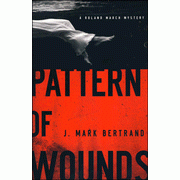Dangerous Passage, by Lisa Harris (Revell, 2013)
When a second Jane Doe is found dead in Atlanta, Georgia, Detective Avery North fears she’s dealing with a serial killer. Can she find—and stop—him before another young woman dies?
As a single mom, Avery’s life is filled with work and family. She barely has time for a pedicure, so how could she add a relationship with the handsome medical examiner, Jackson Bryant? Or is she simply afraid to let herself love again?
The hunt for a serial killer uncovers a twisted net of illegal arms shipments and human trafficking. And the killer’s mind games threaten Avery’s stability. Especially when it looks like there’s a connection with the unsolved murder of her brother, an undercover officer killed in the line of duty.
I enjoyed the mystery and the action in this novel, as well as the glimpses of how Avery learns to balance work, family, faith and personal breathing space. We’re not all detectives, but most of us have more to do in our days than time to do it, and it’s good to see how other people handle this struggle.
Forgiveness is another key theme in the novel. Avery and family have lost her brother, Michael, and she blames another member of the force. There’s no proof—yet. But she can’t stop digging. Michael’s case isn’t solved in this novel, and I expect to see more of it in the next book in the Southern Crimes series.
Lisa Harris is an award-winning author of inspirational romance and suspense. She and her husband are serving as missionaries in Mozambique. For more about the author, check out her website: lisaharriswrites.com.
[Review copy from my personal library.]


